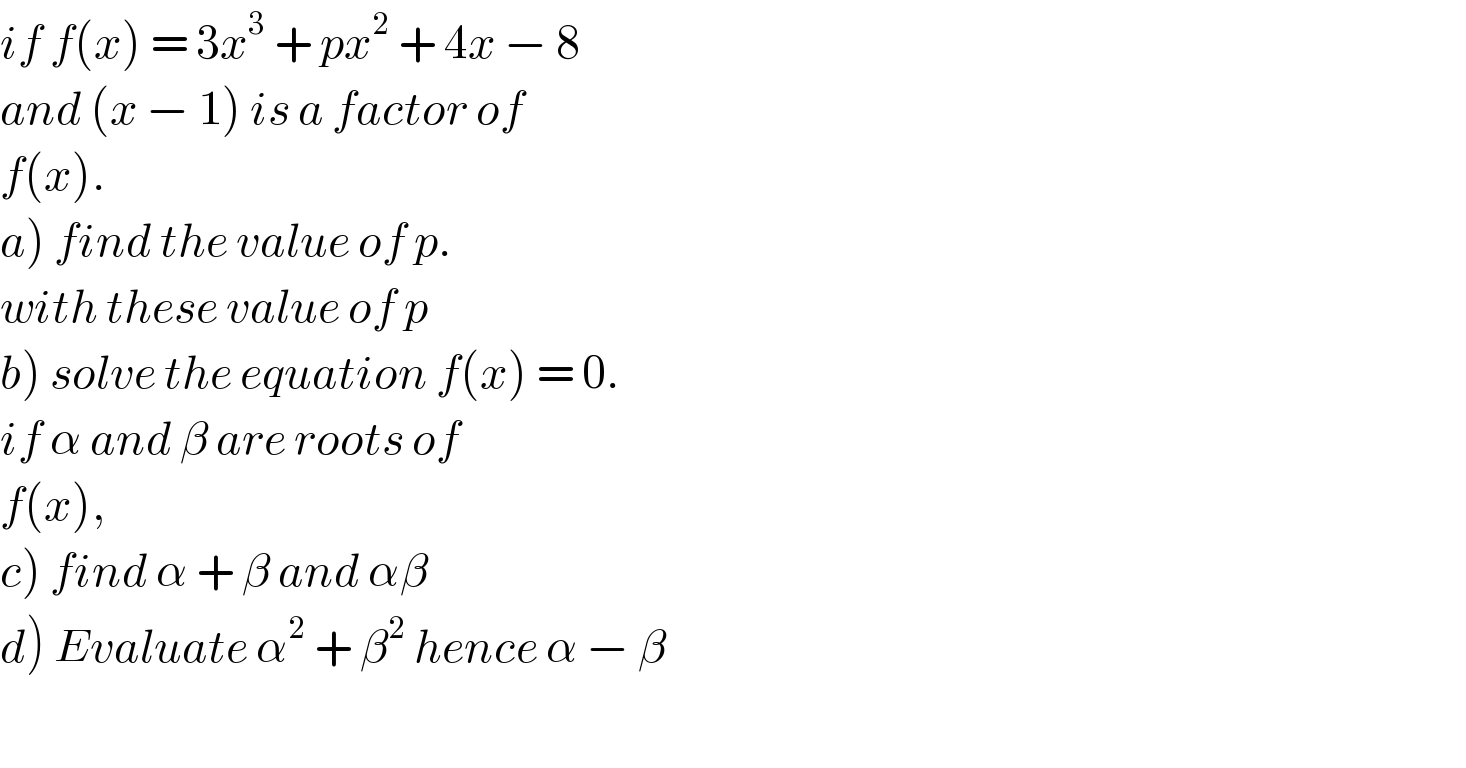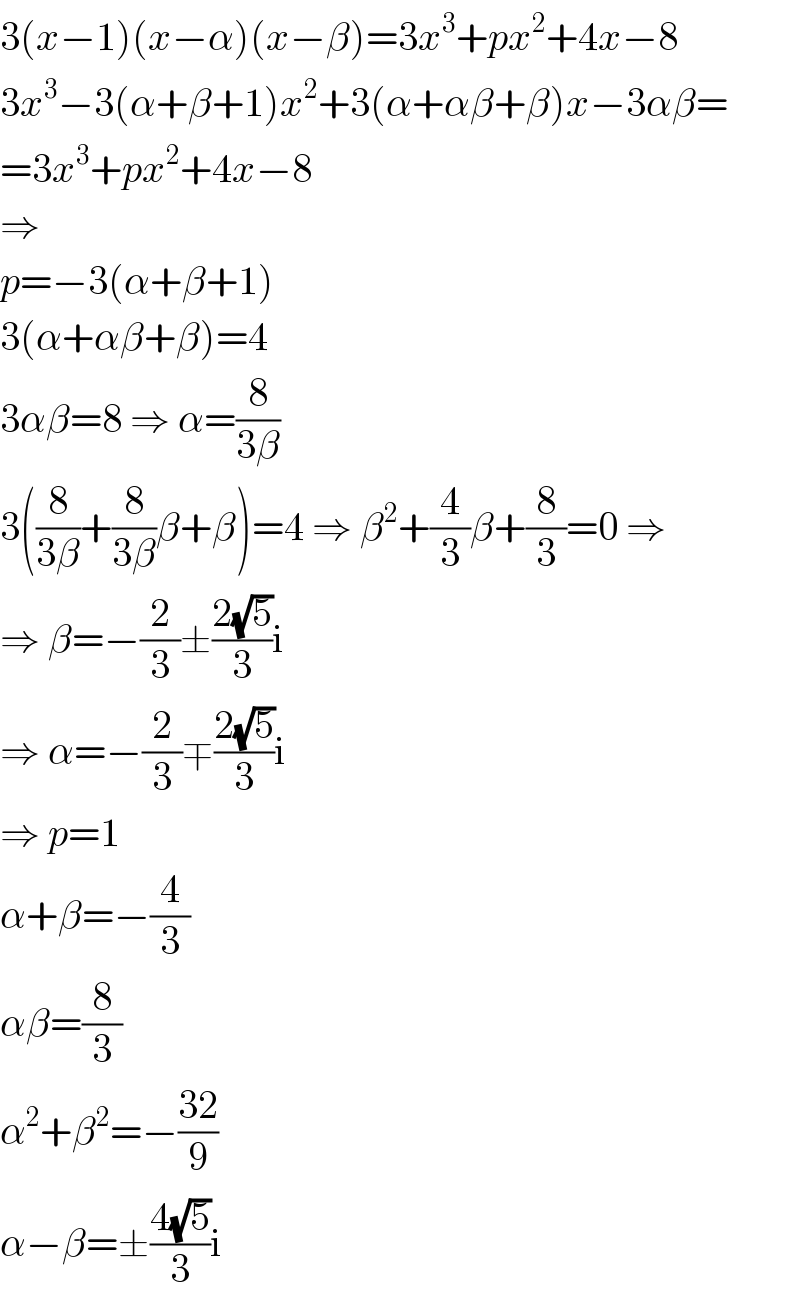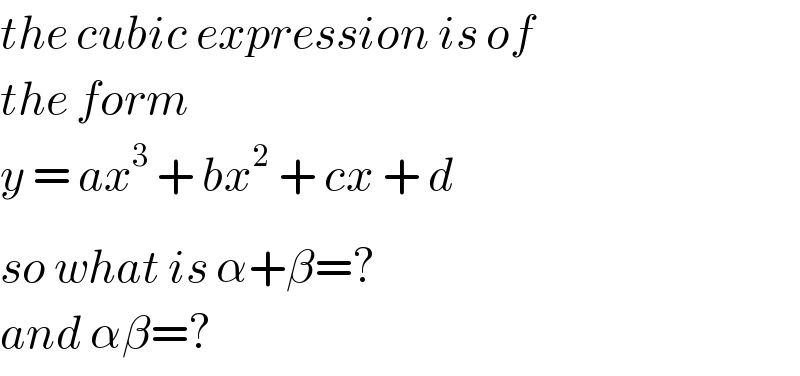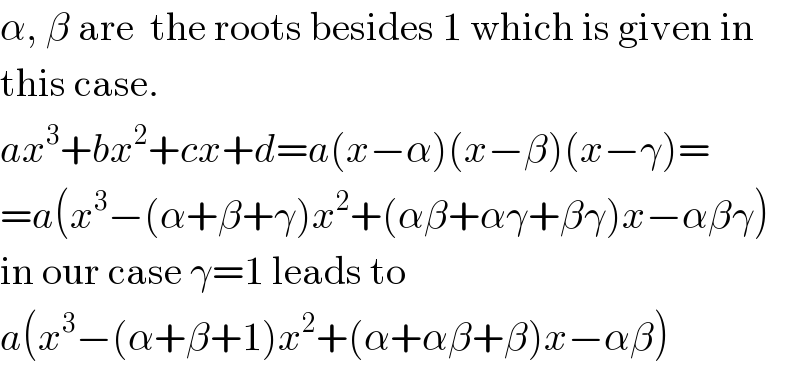
Question and Answers Forum
Question Number 39827 by Rio Mike last updated on 11/Jul/18

Answered by MJS last updated on 11/Jul/18

Commented by Rio Mike last updated on 12/Jul/18

Commented by MJS last updated on 12/Jul/18

Answered by Rasheed.Sindhi last updated on 13/Jul/18
![AnOther approach If f(x) is divided by x−1 then the quotient Q(x) and remainder R can be determined by synthetic division: (((1) 3),( p),( 4),( −8)),(,( 3),(p+3),( p+7)),(( 3),(p+3),(p+7),(∣p−1^(−) )) ) ∵ x−1 is factor of f(x) ∴R=p−1=0⇒p=1 (a) Q(x)=3x^2 +(p+3)x+(p+7) =3x^2 +(1+3)x+(1+7) =3x^2 +4x+8 f(x)=(x−1).Q(x)+R [Relation between divedend,divisor & remainder] =(x−1).Q(x)+0 =(x−1)(3x^2 +4x+8) (b) f(x)=0⇒x−1=0 ∣ 3x^2 +4x+8=0 x=1 ∣ x=((−4±(√(16−96)))/6) ∣ x=((−2±2i(√5))/3) Let α & β are the roots of 3x^2 +4x+8=0 α+β=−(4/3) & αβ=(8/3) α−β=((−2+2i(√5))/3)−((−2−2i(√5))/3) =((4(√5))/3)i α^2 +β^2 =(α+β)^2 −2αβ=(−(4/3))^2 −2((8/3)) =((16)/9)−((16)/3)=((16−48)/9)=−((32)/9)](Q39877.png)
